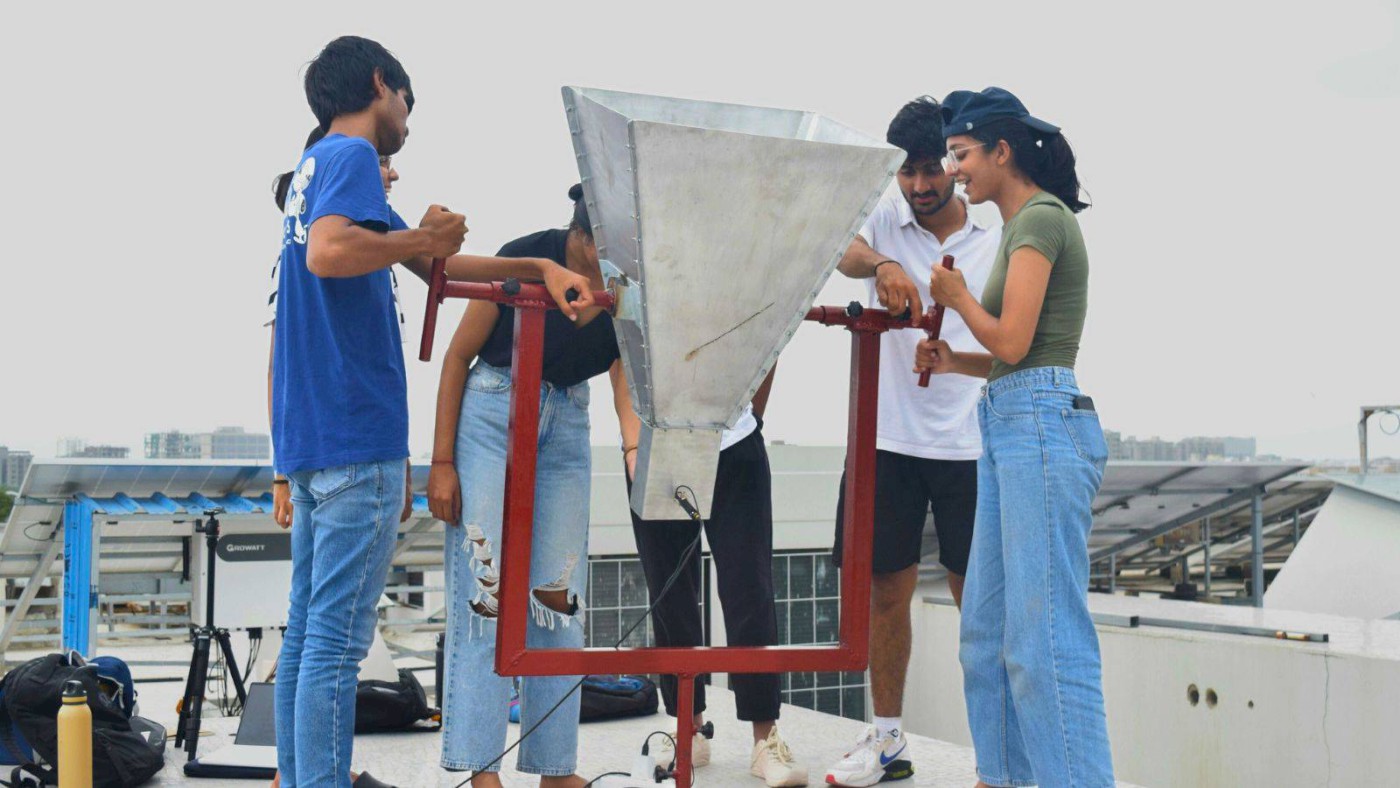6 December 2024
An Experiential Approach to Astrophysics: Students Build a Radio Telescope to Study the Milky Way

Embodying the University's commitment to experiential and interdisciplinary learning, students developed an innovative project – a radio telescope, designed to observe 1.4 GHz signals emitted by hydrogen gas in the Milky Way.
The aluminium horn was acquired from Pune, while the telescope’s mount was designed and fabricated by a dedicated group of undergraduate students from the BTech programme. The students eventually assembled the entire telescope along with its electronics, set it up and successfully completed the testing of electronics and received signals from the Milky Way.
The BOSE Antenna-I serves as a valuable tool for simplifying the teaching of astronomy and astrophysics courses, providing students with hands-on experience in using a radio telescope and acquiring data. This practical application helps bridge the gap between complex physics concepts and engineering concepts, thus, enriching core physics courses and lab work. The project's underlying goal is to create a low-cost, accessible telescope that demystifies the complexities of radio telescope construction for students.
These students – Yash Shah, Manya Trivedi, Krisha Patwa, Maitri Shah, and Bhismadevsinh Rathod – weren't just learning about radio astronomy; they were doing it. For the students, the experience was transformative. "Detecting the first signal from the Milky Way after weeks of designing and fabricating the telescope's mount was an unforgettable experience," said Manya. "The highlight of this project was calculating the temperature of a cosmic source. The data aligned as expected after numerous trials, recalculations, and debugging. It was incredibly satisfying to see our hard work pay off." This quote speaks volumes about the power of experiential learning. The students were reading about astrophysics, actively engaging in the scientific process, facing challenges, troubleshooting problems, and ultimately achieving a tangible result.
Conceptualised and developed as part of the Undergraduate Research Programme (UGRP), the project was supervised by Professors Samyaday Choudhury (School of Arts and Sciences) and Keyur Joshi (School of Engineering and Applied Science), with invaluable collaboration from Ashish Mhaske of the Inter-University Centre for Astronomy and Astrophysics, Pune.
The project was further supported by a Teaching Innovation Grant, highlighting the University's dedication to facilitating hands-on learning. The students received continuous support from Mr Ravi Varsada (Manager, Physics Laboratory), Mr Bharat Sood and Mr Sonu from the University’s fabrication workshop team. The project is an example of the University's interdisciplinary learning approach, seen among students, faculty, and staff.
The learning outcomes of this project are multifaceted. Beyond the specific knowledge gained in astronomy, astrophysics, and computer science, the students learned the interdisciplinary nature of such an endeavour. They worked alongside peers from other disciplines, gaining a deeper understanding of the concepts used in mechanical engineering, electrical engineering, and electronics. The project also provided invaluable training in essential soft skills, such as negotiation tactics (for acquiring materials), communication, and teamwork. The BOSE Antenna-I project at Ahmedabad University exemplifies how experiential and interdisciplinary learning can empower students.



